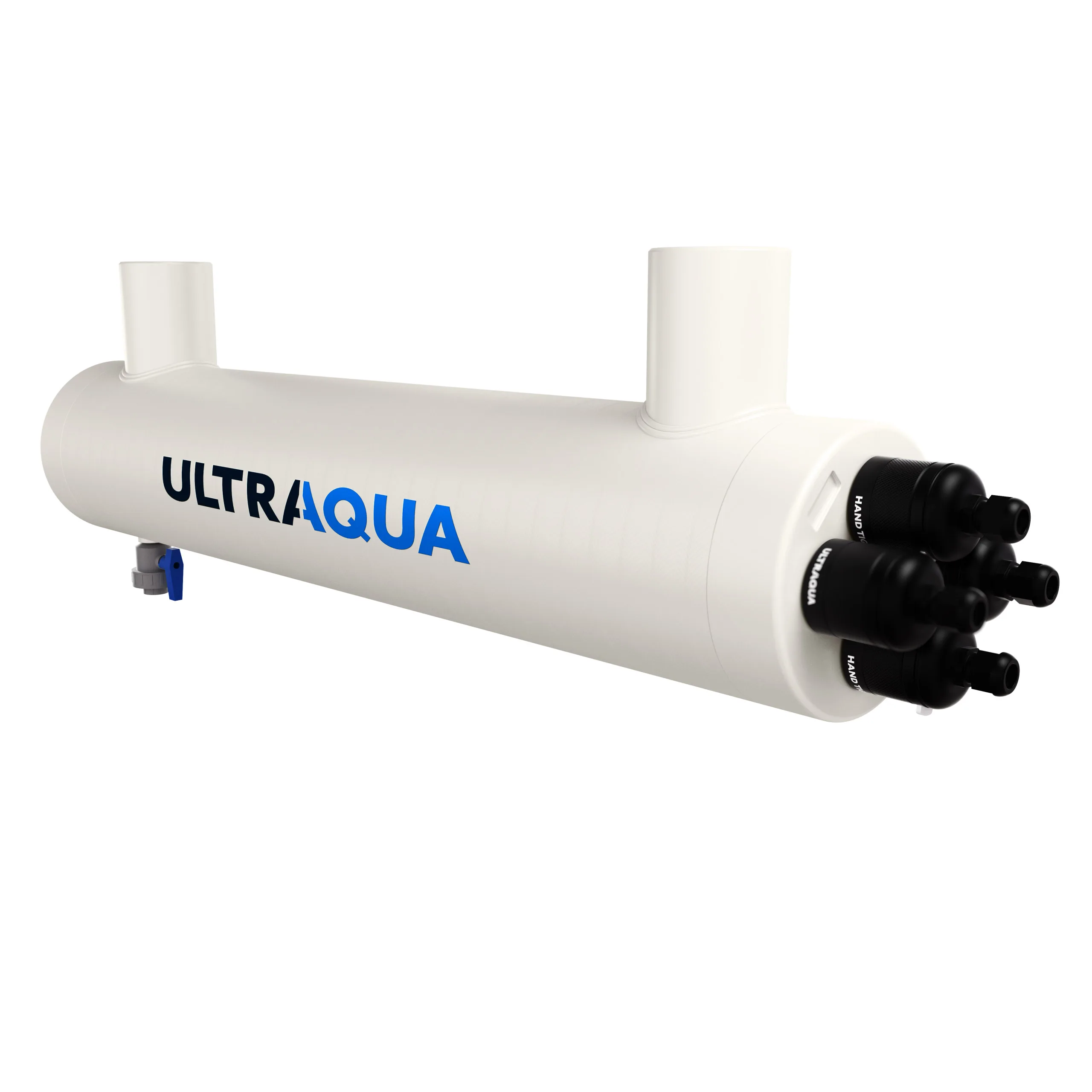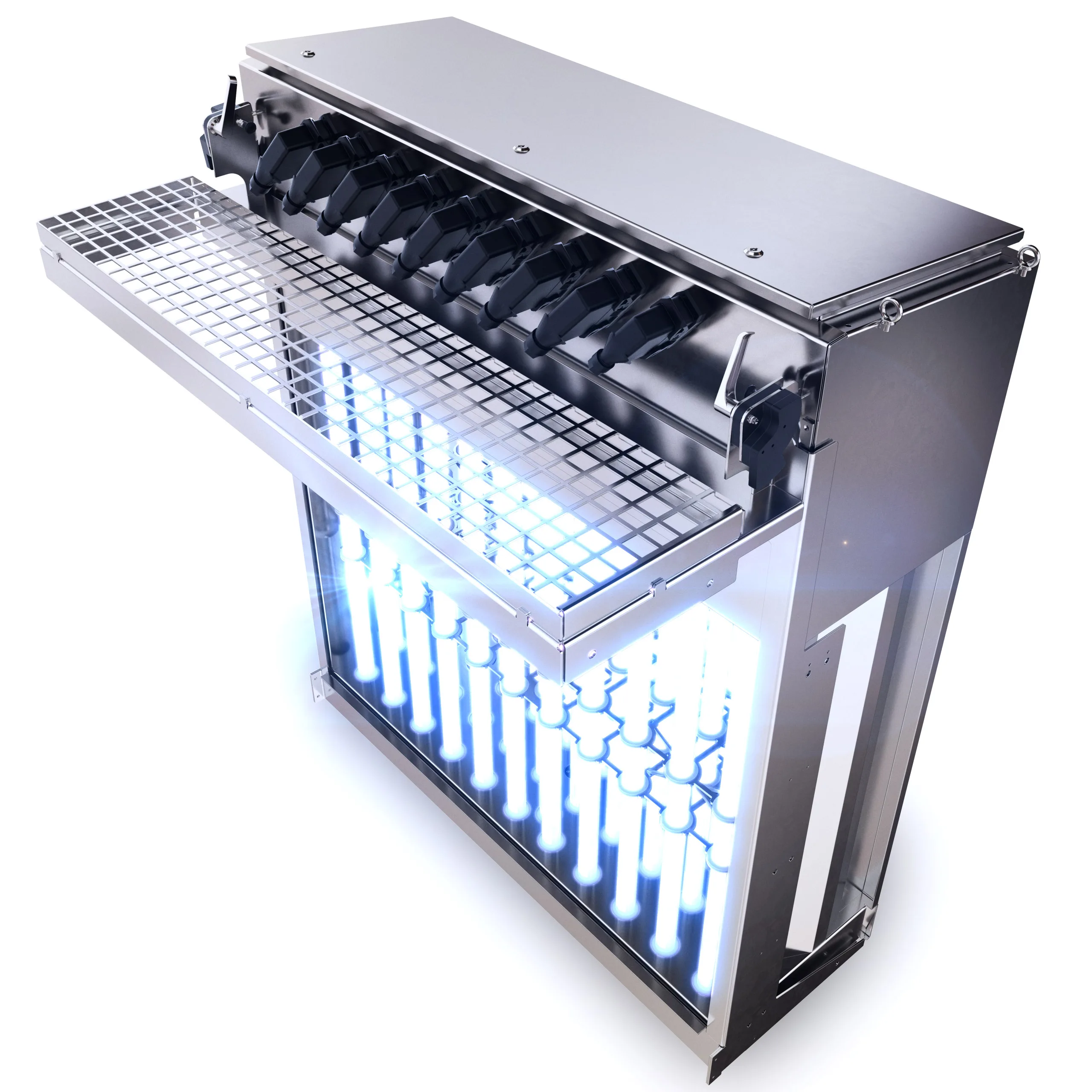Today, the aquaculture industry accounts for more than 47% of the world’s seafood consumption and the number continues to grow. With this, the industry practices have been called into question due to end-product quality and environmental strain caused by out-dated and poor practices. But it doesn’t have to be this way. As a pioneer and leader in developing UV systems for the aquaculture sector, we ensure water biosecurity of cultured species to protect the production from contamination – in a range of climates.
Learn more by choosing a related application or product.
Support throughout the entire process
Backed by 25+ years of research and innovation experience, our engineers and industry specialists offer a range of services to ensure optimized UV disinfection for your specific requirements. This includes engineering support, optimal UV system sizing for the selected application, 3D drawings, analytical support of water samples, on-site validation testing, and much more.
FREQUENTLY ASKED QUESTIONS (FAQ)
Find frequently asked questions regarding UV disinfection for this industry by clicking on a question below.
How does UV disinfection in RAS improve fish health and growth rates?
UV disinfection plays an essential role in maintaining optimal health conditions within RAS facilities by neutralizing pathogenic microorganisms that can cause disease. This process helps to prevent the spread of infections among the selected species, leading to healthier, more robust growth and higher survival rates. It is a non-invasive and non-chemical method that sustainably ensures the well-being of the fish.
Are UV disinfection systems difficult to maintain?
UV disinfection systems are designed for ease of maintenance, ensuring that they can be serviced with minimal downtime. Additionally, alarms regarding performance, lamp lifetime, etc., are available through the control cabinet, allowing for proactive maintenance. This can be combined with automatic sleeve wiping technology to further enhance operational efficiency and minimize maintenance requirements.
Does UV disinfection affect the water quality in RAS?
UV disinfection positively affects water quality in RAS without altering its chemical composition. Unlike chemical treatments, UV disinfection does not leave any residues or by-products in the water. This means the water remains safe and healthy for the species being cultured, without the risk of chemical buildup in the system.
How do I choose the correct material for the UV reactor?
Depending on the source of intake water, the environment can be very corrosive due to salinity or air humidity. This can be a challenging setting for commonly used materials in UV reactors and control cabinets.
Based on 25 years of experience in seawater disinfection in warm and cold-water environments, ULTRAAQUA has developed the UV stabilized polypropylene (PP), which is resistant to warm seawater due to its non-corrosive construction. For cold seawater and freshwater applications, fully electropolished SS316L reactors are available. This ensures an increased corrosion resistance on the outside surface, and increased UV light performance due to internal reflection on the inside surface.
How does UV disinfection support the health of shrimp during the farming process?
UV disinfection is a critical component in maintaining water biosecurity at all stages of shrimp farming, from hatcheries to nurseries and grow-out facilities. It effectively inactivates common shrimp diseases such as White Spot Syndrome (WSSV), Vibrio, EMS, and Mortality Syndrome (EHP), without altering water properties or creating harmful residues. This leads to healthier post-larval and juvenile shrimp, which are more resilient during the grow-out stage, resulting in higher survival rates.
Do UV systems help maximize yield and cost efficiency?
As a long-term supplier to the shrimp & prawn industry, we have seen countless examples of farmers all over the globe experiencing better feed conversion ratios, a significant reduction in antibiotic use, as well as improved survival rates across all steps of shrimp rearing. All these factors are directly linked to maximizing yield and cost efficiency.
Can UV systems be used for both intake and discharge water in shrimp farming?
The versatility of ULTRAAQUA UV systems makes them capable of disinfecting both intake, process, and discharge water. They are also effective in chlorine and ozone destruction applications, which is important for preventing potential negative impacts on the cultured shrimp.
Why is intake water disinfection crucial for aquaculture operations?
Intake water disinfection is crucial because it serves as the first line of defense in maintaining high biosecurity standards within aquaculture operations. Untreated intake water can introduce pathogens that may contaminate the entire production line, from hatchery to rearing tanks. This is especially critical for the protection of small eggs and fry, which are particularly vulnerable in their early life stages
How does UV disinfection of water compare to chemical disinfection methods?
UV disinfection is a physical process that does not introduce any chemicals into the water, maintaining the natural water quality and avoiding potential harm to aquatic species. It is environmentally friendly and cost-effective compared to chemical methods, which can leave residual compounds that may affect both the health of the species and the environment.
What are the costs of adding UV disinfection to an existing aquaculture facility?
Integrating UV disinfection systems into an existing aquaculture facility is an investment in the longevity and productivity of the entire aquaculture operation. While there is an upfront cost for the equipment and installation, the long-term benefits include reduced mortality rates, improved water quality, and decreased reliance on chemical treatments. These factors contribute to an increased long-term cost-efficient operation by lowering ongoing expenses related to fish health and water management, enhancing the overall efficiency of the aquaculture system.
Why are UV systems beneficial for disinfection in wellboat operations?
UV disinfection plays a vital role in wellboat operations for maintaining the health and welfare of the fish during transport. UV systems effectively neutralize harmful pathogens and parasites in the water, reducing the risk of disease outbreaks to ensure that the fish remain healthy throughout the journey.
How does UV treatment benefit the overall quality of water in wellboats?
UV treatment significantly improves the water quality in wellboats by eliminating microorganisms that can degrade water conditions. This leads to a healthier environment for the fish, reducing stress and mortality rates during transport.
Is UV disinfection a cost-effective water treatment method?
UV disinfection is a cost-effective solution for wellboats, as it helps in reducing losses due to disease and contributes to the overall health and overall quality of the fish, leading to better market value.
How does UV treatment contribute to sustainable aquaculture practices in wellboats?
UV treatment contributes to sustainable aquaculture practices by providing a chemical-free method of maintaining water quality. This approach aligns with environmental conservation efforts and ensures the well-being of the fish, supporting sustainable aquaculture practices.
What is Geosmin and MIB, and why are they a concern in aquaculture?
Geosmin and Methyl-Isoborneol (MIB) are naturally occurring compounds often found in fish from Recirculating Aquaculture Systems (RAS). The compounds accumulate in the fat tissue of fish, leading to an earthy, muddy taste. This not only affects the quality of the fish but also leads to economic losses due to extended production times and potential rejection by fish refining companies.
What is the role of UV disinfection in mitigating Geosmin and MIB in water?
UV disinfection can play a crucial role in mitigating Geosmin and MIB (2-Methylisoborneol) in water, which are compounds responsible for earthy and musty odors. UV treatment is capable of breaking down these compounds, improving the water’s taste and odor.
What are the traditional methods for removing Geosmin and MIB from fish?
Traditionally, fish are placed in large tanks of high-purity, oxygen-rich water to remove Geosmin and MIB. While effective, this method is costly and requires large quantities of pure water, making it a less feasible option for many aquaculture operations.
How do ULTRAAQUA AOP systems contribute to the mitigation of Geosmin and MIB?
The AOP systems from ULTRAAQUA use a combination of chemical oxidation and photolysis to effectively break down Geosmin and MIB. This advanced treatment method is particularly beneficial in handling the complex nature of these compounds in RAS facilities.




























